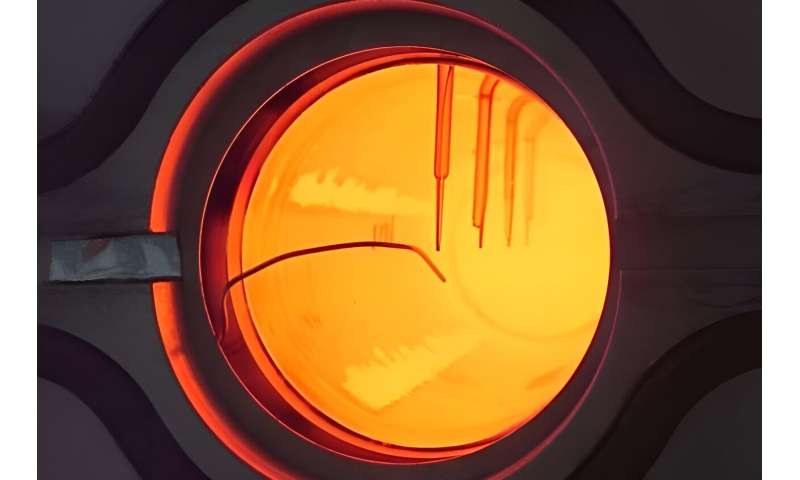Best of Last Week—Merging twin quasars, using solar to generate heat over 1,000°C, new brain-computer interface

It was a good week for space research, as a NASA team working on the Juno space probe project published high definition views of Europa's icy shell—the images support a theory that the icy crusts at the north and south poles of the moon are not where they used to be. Also, a team of astronomers from Japan, China and the U.S., studying data obtained from the Hyper SuprimeCam Subaru Strategic Program survey, discovered merging twin quasars. And a physics doctoral student at the University of Central Florida conducted a comparative analysis of primitive asteroids that could provide context for further research and inform future NASA missions. After poring through a library of infrared telescope data and analyzing the spectral composition of 25 members of the Erigone family of primitive asteroids, Brittany Harvison helped fill in gaps in understanding of the creation of our solar system.
In technology news, a team of engineers working in Nanjing, China, announced that they had developed eye-tracking smart contact lenses based on radio frequency tags that may be used for a wide variety of applications, including health care and augmented reality. And a team of researchers at Politecnico di Milano developed a type of floating photovoltaic that might be used to limit Africa's future reliance on hydro-generated energy. Also, a team of engineers in China, at the University of Science and Technology's iGAN Laboratory developed a promising three-terminal diode for wireless communication and optically driven computing. And a small team of mechanical and process engineers at ETH Zurich generated heat over 1,000°C using solar power instead of fossil fuel—a sign that it could be used in applications such as smelteries and cement factories.
In other news, a team of medical researchers at Washington University School of Medicine in St. Louis found that repeat COVID-19 vaccinations elicit antibodies that neutralize variants and other viruses. Also, an international team of Earth scientists found that today's rate of atmospheric carbon dioxide increase is 10 times faster than at any other point in the past 50,000 years. And finally, a team of brain specialists at the California Institute of Technology developed a brain–computer interface approach to decoding words "spoken" entirely in the brain by recording signals from individual neurons in real time—a first.
© 2024 Science X Network